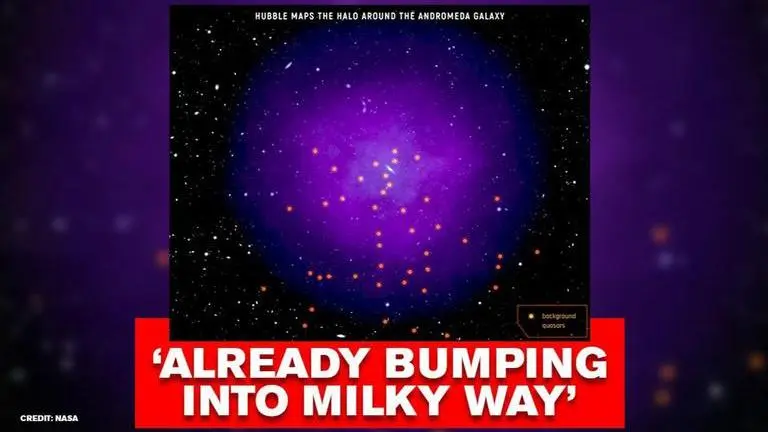Updated 29 August 2020 at 12:07 IST
NASA's Hubble Space Telescope maps giant halo surrounding Andromeda galaxy
NASA’s Hubble space telescope has mapped a giant halo around Andromeda galaxy, which is the nearest from the milky way which extends 1.3 million light-years
- Science News
- 2 min read

NASA’s Hubble space telescope has mapped a giant halo around Andromeda galaxy, which is the nearest from the milky way. As per the team’s findings, which were published in the Astrophysics Journal on August 27, the invisible halo of diffuse plasma extended 1.3 million light-years from the galaxy, which means it was already colliding with the halo of Milky Way. Since scientists live inside the Milky Way, they are unable to interpret the signature of its halo but it is believed to be same as Andromeda's.
Credits: NASA
“Understanding the huge halos of gas surrounding galaxies is immensely important. This reservoir of gas contains fuel for future star formation within the galaxy, as well as outflows from events such as supernovae. It’s full of clues regarding the past and future evolution of the galaxy, and we’re finally able to study it in great detail in our closest galactic neighbour, ” said co-investigator Samantha Berek.
Advertisement
Innner and outer shell
As a part of the landmark study, they also discovered that the halo has a layered structure, with the two main nested and distinct shells of gas. Explaining further, study Leader Nicolas Lehner said that the inner shell, which extended half a million light-years was more complex and dynamic. In contrast, the outer shell, was comparatively smoother and hotter adding that the difference was a “ likely result from the impact of supernova activity in the galaxy’s disk more directly affecting the inner halo.” The team has also discovered a large number of heavy elements in the gaseous halo. The scientists have now predicted that both the halos of Andromeda and Milky Way were on a collision course indicating that both the galaxies would merge to form a bigger elliptical galaxy, in upcoming four billion years.
Advertisement
Published By : Riya Baibhawi
Published On: 29 August 2020 at 12:07 IST

